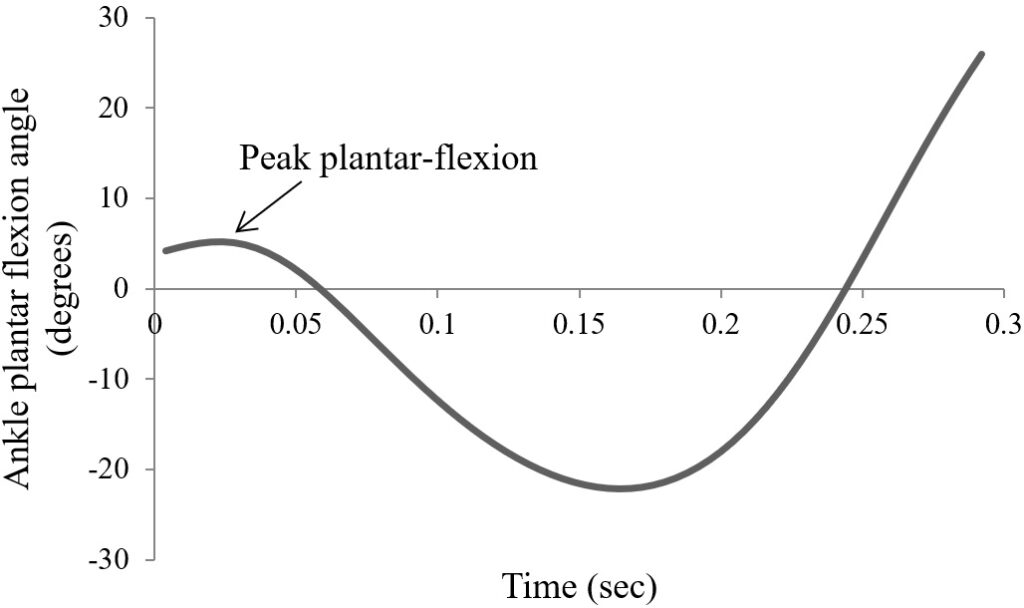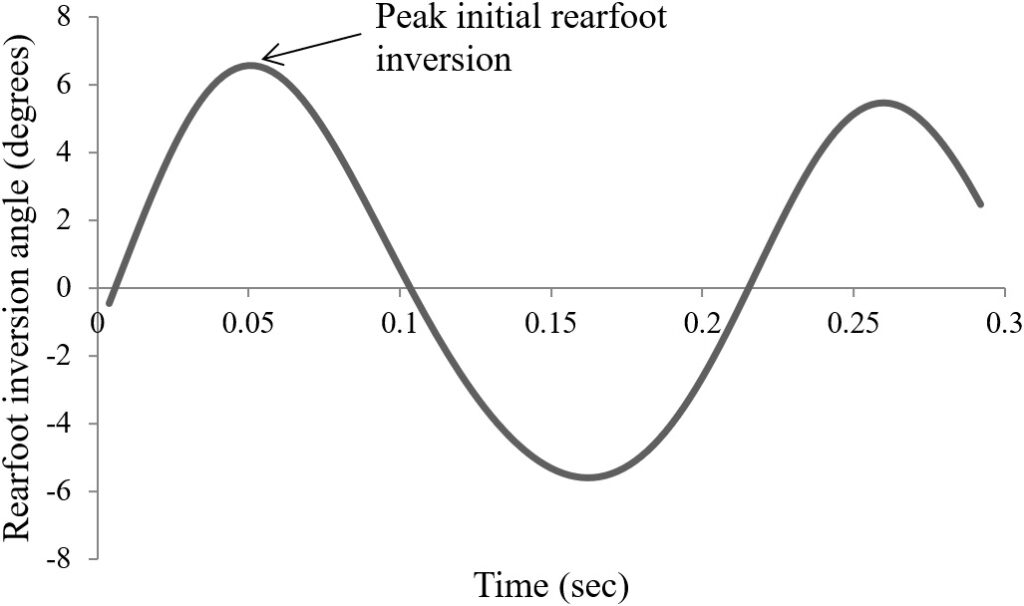1. Ben Abdelkirm N, El Fazaa S, El Ati J. Time-motion analysis and physiological data of elite under-19 basketball players during competition. Brit J Sport Med. 2007; 41(2): 69-75. doi: 10.1136/bjsm.2006.032318
2. Meeuwisse WH, Sellmer R, Hagel BE. Rates and risks of injury during intercollegiate basketball. Am J Sport Med. 2003; 31(3): 379-385. doi: 10.1177/03635465030310030901
3. Matthew D, Delextrat A. Heart rate, blood lactate concentration and time-motion analysis of female basketball players during competition. J Sport Sci. 2009; 27(8): 813-821. doi: 10.1080/02640410902926420
4. McClay IS, Robinson JR, Andriacchi TP, et al. A kinematic profile of skills in professional basketball players. J Appl Biomech. 1994; 10(3): 205-221. doi: 10.1123/jab.10.3.205
5. Deitch JR, Starkey C, Walters SL, Moseley JB. Injury risk in professional basketball players: a comparison of women’s National Basketball Association and National Basketball Association athletes. Am J Sport Med. 2006; 34(7): 1077-1083. doi: 10.1177/0363546505285383
6. Dick R, Hertel J, Agel J, Grossman J, Marshall SW. Descriptive epidemiology of collegiate men’s basketball injuries: National Collegiate Athletics Association Injury Surveillance Systems, 1988-1989 through 2003-2004. J. Athl Training. 2007; 42(2): 194-201.
7. Dayakidis MK, Boudolos, K. Ground reaction force data in functional ankle instability during two cutting movements. Clin Biomech. 2006; 21(4): 405-411. doi: 10.1016/j.clinbiomech.2005.11.010
8. Fong DTP, Hong Y, Xian Li J. Cushioning and lateral stability functions of cloth sports shoes. Sport Biomech. 2007; 6(3): 407-417. doi: 10.1080/14763140701491476
9. Fu W, Fang Y, Liu Y, Hou J. The effect of high-top and lowtop shoes of ankle inversion kinematics and muscle activation in landing on a tilted surface. Journal of Foot and Ankle Research. 2014; 7(14): 1-10. doi: 10.1186/1757-1146-7-14
10. Graf ES, Stefanyshyn DJ. The shifting of the torsion axis of the foot during the stance phase of lateral cutting movements. J Biomech. 2012; 45(15): 2680-2683. doi: 10.1016/j.jbiomech.2012.08.025
11. Delahunt E, McGrath A, Doran N, Coughlan GF. Effect of taping on actual and perceived dynamic postural stability in persons with chronic ankle instability. Arch Phys Med Rehab. 2010; 91(9): 1383-1389. doi: 10.1016/j.apmr.2010.06.023
12. Di Stafano LJ, Padua DA, Brown CN, Guskiewicz KM. Lower extremity kinematics and ground reaction forces after prophylactic lace-up ankle bracing. J Athl Training. 2008; 43(3): 234-241. doi: 10.4085/1062-6050-43.3.234
13. Delahunt E, Monaghan K, Caulfield B. Changes in lower limb kinematics, kinetics and muscle activity in subjects with functional instability of the ankle joint during a single leg drop jump. J Orthopaed Res. 2006; 24(10): 1991-2000. doi: 10.1002/jor.20235
14. Fallet L, Grimm DJ, Saracco JA. Sprained ankle syndrome: prevalence and analysis of 639 acute injuries. J Foot Ankle Surg. 1998; 37(4): 280-285. doi: 10.1016/S1067-2516(98)80063-X
15. Moiler K, Hall T, Robinson K. The roles of fibular tape in the prevention of ankle injury in basketball: a pilot study. J Ortho Sport Phys. 2006; 36(9): 661-668. doi: 10.2519/jospt.2006.2259
16. Baumhauer JF, Alosa DM, Renstrom PAFH, Trevino S, Beynnon B. A prospective study of ankle injury risk factors. Am J Sport Med. 1995; 23: 564-570. doi: 10.1177/036354659502300508
17. Fujii T, Kitaoka HB, Luo ZP, Kura H, An KN. Analysis of ankle-hind foot stability in multiple planes: an in vitro study. Foot Ankle Int. 2005; 26(8): 633-637. doi: 10.1177/107110070502600810
18. Brizuela G, Llana S, Ferrandis R, Garcia-Belenguer AC. The influence of basketball shoes with increased ankle support on shock attenuation and performance in running and jumping. J Sport Sci. 1997; 15(5): 505-515. doi: 10.1080/026404197367146
19. Ricard MD, Schulties SS, Saret JJ. Effects of high-top and low-top shoes on ankle inversion. J Athl Training. 2000; 35(1): 38-43. doi: 10.1186/1757-1146-7-14
20. Brauner T, Zwinzscher M, Sterzing T. Basketball footwear requirements are dependent on playing position. Footwear Science. 2012; 4(3): 191-198. doi: 10.1080/19424280.2012.674980
21. Lowe M. Basketball Shoes and Injuries. Website: http://www.aapsm.org/mlbball.html. 2014; Accessed 2014.
22. Ottaviani RA, Ashton-Miller JA, Kothari SU, Wojtys EM. Basketball shoe height and the maximal muscular resistance to applied ankle inversion and eversion moments. Am J Sport Med. 1995; 23(4): 418-423. doi: 10.1177/036354659502300408
23. Mickel TJ, Bottoni CR, Tsuji G, Chang K, Baum L, Tokushige KAS. Prophylactic bracing verses taping for the prevention of ankle sprains in high school athletes: a prospective, randomised trial. J Foot Ankle Surg. 2006; 45(6): 360-365. doi: 10.1053/j.jfas.2006.09.005
24. Gottschalk AW, Pepple DA. Shoe wear and the prevention of ankle sprains. Evidence Based Practice. 2011; 14(8): 13.
25. Rovere GD, Clarke TJ, Yates CS, Burley K. Retrospective comparison of taping and ankle stabilizers in preventing ankle injuries. Am J Sport Med. 1988; 16: 228–233. doi: 10.1177/036354658801600305
26. Curtis CK, Laudner KG, McLoda TA, McCaw ST. The role of shoe design in ankle sprain rates among collegiate basketball players. J Athl Training. 2008; 43(3): 230-233. doi: 10.4085/1062-6050-43.3.230
27. Hootman JM, Dick R, Agel J. Epidemiology of collegiate injuries in 15 sports: summary and recommendations for injury prevention initiatives. J Athl Training. 2007; 42(2): 311-319.
28. Payne KA, Berg K, Latin RW. Ankle injuries and ankle strength, flexibility and proprioceptive in college basketball players. J Athl Training. 1997; 32(3): 221-225.
29. Kadaba MP, Ramakrishnan HK, Wootten ME. Measurement of lower extremity kinematics during level walking. J Orthopaed Res.1990; 8: 383-392. doi: 10.1007/978-1-4471-5451-8_100
30. Dixon S. The influence of heel lift devices on the loading of the Achilles tendon in running. Unpublished doctorial thesis, Loughborough University; 1996.
31. Sinclair J, Taylor PJ, Hebron J, Chockalingam N. Differences in multi-segment foot kinematics measured using skin and shoe mounted markers. Foot Ankle Online J. 2014; 7(2): 7. doi: 10.3827/faoj.2014.0701.0001
32. Sinclair J, Greenhalgh A, Taylor PJ, Edmundson CJ, Brooks D, Hobbs SJ. Differences in tibiocalcaneal kinematics measured with skin and shoe-mounted markers. Hum Movement. 2013; 14: 64-69. doi: 10.2478/humo-2013-0005
33. Bartlett R. Introduction to Sport Biomech: Analysing human movement patterns. New York, NY: Routledge; Website: http://www.amazon.in/Marys-BSc-Sports-Science-Bundle/dp/0415339944. 2007; Accessed 2014.
34. Stacoff A, Stuessi E, Sonderegger D. Lateral stability of sports shoes. In: Winter A, ed. Biomechanics IX-B. Champaign, IL, USA: Human Kinetics; 1983: 139-143. doi: 10.1123/ijsb.1.4.354
35. Cohen J. Statistical power analysis for the behavioural sciences. 2nd ed. Hillsdale, HJ: Erlbaum; 1988.
36. Luethi SM, Frederick EC, Hawes MR, Nigg BM. Influence of shoe construction on lower extremity kinematics and load during lateral movements in tennis. International J of Sport Biomech. 1986; 2: 166-174. doi: 10.1123/ijsb.2.3.166
37. Stacoff A, Steger J, Stussi E, Reinschmidt C. Lateral stability in sideward cutting movements. Med Sci Sports Exerc. 1996; 28: 350-358. doi: http://www.ncbi.nlm.nih.gov/pubmed/10940397
38. Avramakis E, Stacoff A, Stussi E. Shoe design and lateral stability in floorball. Presented at: Fourth International Society of Biomechanics Symposium on Footwear Biomechanics; August 5-7, 1999; Canmore, Alberta, Canada.
39. Baratta R, Solomonov M, Zhou, BH, Letson R, Chuinard R, D’Ambrosia R. Muscular coactivation: the role of the antagonist musculature in maintaining knee stability. Am J Sport Med. 1988; 16: 113-122. doi: 10.1177/036354658801600205
40. Nakazawa K, Kawashima N, Akai M, Yano H. On the reflex coactivation of ankle flexor and extensor muscles induced by a sudden drop of support surface during walking in humans. J Appl Physiol. 2004; 96: 604-611. doi: 10.1152/japplphysiol.00670.2003
41. Hopkins TJ, McLoad T, McGraw S. Muscle activation following sudden ankle inversion during standing and walking. Eur J Appl Physiol. 2007; 99: 371-378. doi: 10.1007/s00421-006-0356-9
42. Karlsson J, Andreasson GO. The effect of external ankle support in chronic lateral ankle joint instability: an electromyographic study. Am J Sport Med. 1992; 20: 257–261. doi: 10.1177/036354659202000304
43. Cole GK, Nigg BM, Fick GH, Morlock M. Internal loading of the foot and ankle during impact in running. J Appl Biomech. 1995; 11: 25-46. doi: 10.1123/jab.11.1.25
44. De Wit B, De Clercq D, Lenoir M. The effect of varying midsole hardness on impact forces and foot motion during foot contact in running. J Appl Biomech. 1995; 11: 395-406. doi: 10.1123/jab.11.4.395
45. Dixon SJ, Stiles VH. Impact absorption of tennis shoe-surface compositions. Sports Engineering. 2003; 6: 1-10. doi: 10.1007/BF02844155
46. Damm L, Low D, Richardson A, Clarke J, Carré M, Dixon S. The effects of surface traction characteristics on frictional demand and kinematics in tennis. Sport Biomech. 2013; 12(4): 389-402. doi: 10.1080/14763141.2013.784799
47. Dixon SJ, James IT, Blackburn K, Pettican N, Low D. Influence of footwear and soil density on loading within the shoe and soil surface during running. J Sports Eng Tech. 2008; 222P1: 1-10. doi: 10.1007/978-0-387-46051-2_2
48. Low DC, Dixon SJ. Understanding the effect of changes to natural turf hardness on lower extremity loading. Meas ControlUK. 2014; 47(7): 212-218. doi: 10.1177/0020294014546942







